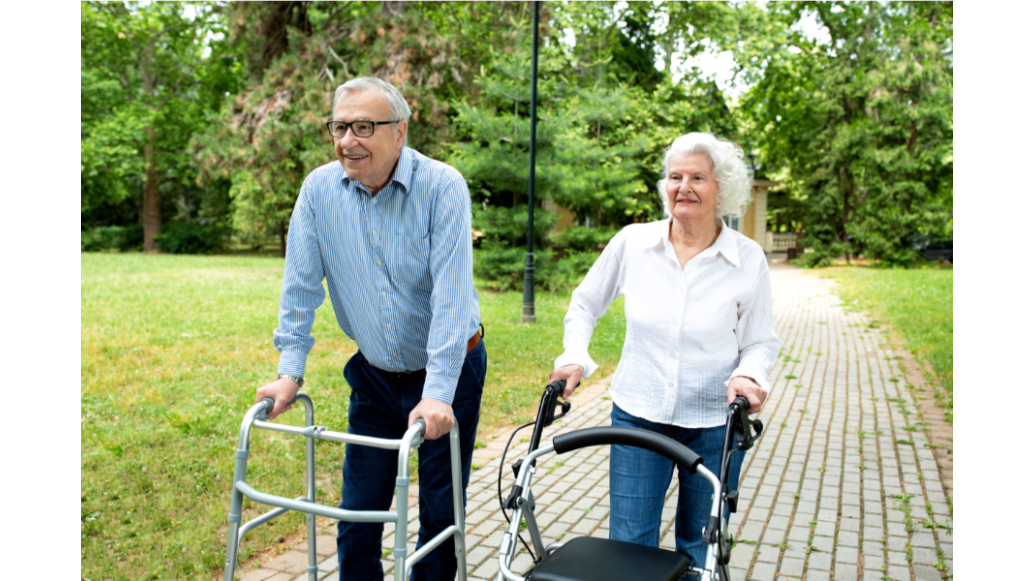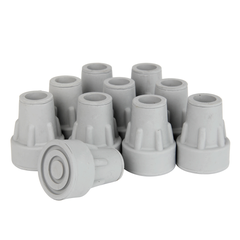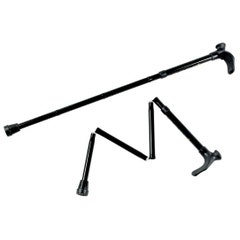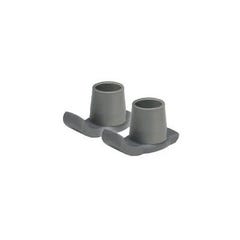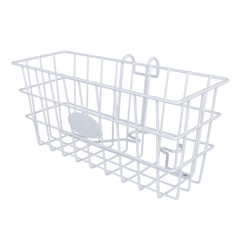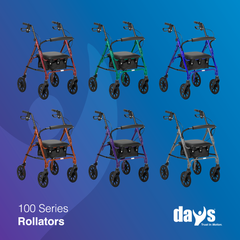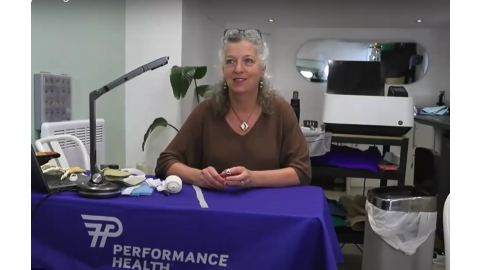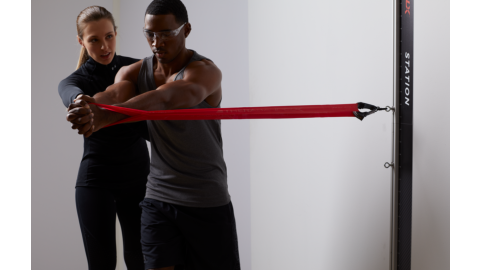Key Takeaways
- Getting out of the house and going for a walk is great for exercise and mental health.
- Many different people with different conditions use mobility devices for all sorts of reasons.
- Practise is often overlooked when it comes to using mobility aids.
- A study from the Journal of the American Geriatrics Society, cites 47,000 senior citizens end up in emergency rooms each year due to improper use and fit of mobility aids.
- Remember CLASPD, before you head out with your mobility aid.
Top Products
As winter gives way to spring, we look to the different activities that are now much more feasible, if not enjoyable, with the warmer weather approaching.
One of the easiest and most accessible ways to enjoy the outdoors while simultaneously getting exercise is to take a stroll. Walking is an excellent form of exercise because it is a low impact activity, low cost, and is easier than most activities to get to – just get outside!
Besides the multitude of physical health benefits that come with walking and being in nature, getting out and about also does wonders for mental health.
However, a study published in June 2009 in the Journal of the American Geriatrics Society, cites 47,000 senior citizens end up in emergency rooms each year due to improper use and fit of mobility aids³.
Let us attempt to quell that number by going through our six tips for using mobility aids safely while out and about.
Table of Contents
- Who uses mobility aids?
- 1. Check conditions
- 2. Look ahead
- 3. Alert to your surroundings
- 4. Slow and steady
- 5. Practise Using Your Mobility Aid(s)
- 6. Do away with distractions
- Recap
Who Uses Mobility Aids?
Before we dive into the safety tips associated with mobility aids like canes, walkers, rollators, wheelchairs, and more, let’s discuss why someone may use a mobility aid.
Although mobility aids are used widely by senior citizens, this is not the only group that may find these aids useful. Those with compromised balance, recently suffered a stroke, illnesses like neuropathy, or those suffering from arthritis can all benefit from using mobility aids.
Ultimately, mobility aids provide necessary balance, body weight distribution, and prevent falls to avoid further injury.
Now let’s get into how to maximise your mobility aid to improve your life and get outside. Follow this easy checklist, using the acronym: CLASPD.
Check conditions
Look ahead
Alertness
Slow and steady
Practise using your mobility aids
Do away with distractions
1. Check conditions
Checking conditions before leaving ensures your mobility device is ready to serve its purpose, to keep you steady and safe while you explore. If conditions are slippery due to rain or ice, you should take extra precautions. That may mean reconsidering your walk and waiting for a time that is safer.
While you're checking conditions and determining the best plan for yourself, check the state of your mobility device. Is it in working order? Have you inspected the rubber ferrules on the bottom of your mobility aid recently? Ensure the ferrules aren’t worn out or lost traction.
Performance Health recommends getting some high-quality, heavy duty replacement ferrules and having extra on hand, so you never have to wait. Find them here: heavy duty bell shaped ferrules.
2. Look ahead
Look ahead, instead of looking down. We all want to look down as we walk to watch where we’re going, but that’s not always the safest way.
Looking ahead allows you to focus on upcoming obstacles and correct ahead of time to avoid them. It actually gives you a wider view than the narrow perspective of looking at your feet. Before heading out on your walk, try this around your home.
Having the proper mobility device for your needs will help you feel safe and stable enough to keep your eyes forward. If you tend to walk with an uneven or unsteady gait, try using this Days Adjustable Lightweight Walking Stick, excellent for daily activities.
Remember please, look ahead, not down!
3. Alert to your surroundings
This may sound obvious, but it’s easy to get caught up in our own thoughts as we go on a walk. Staying alert will keep you safe!
It's important to remember that you may have read this article, and prepared by following CLASPD, but not everyone has. Drivers can be distracted, bikers can be listening to music, and other pedestrians may not understand the effort involved with leaving home with a mobility device. Stay alert, and ideally away from high-traffic areas, if that’s possible for you.
If you’re using a cane or have trouble with balance, we suggest trying the Homecraft Contoured Grip Sticks. These walking sticks are an excellent way to enjoy yourself while out on your walk, without wondering if something on the ground is going to cause you to fall.
Remain vigilant for cars, bikers, other pedestrians, and even animals you may encounter while out and about.
4. Slow and steady
Tip number four, keep it slow and steady as you enjoy your stroll. There is no need to keep anyone else’s pace but your own.
This is your time to take a deep breath and appreciate your adventure. You’ve put in a lot of time and energy to make sure this is a fun and worthwhile adventure for you. Don’t speed around hoping to get a certain number of steps, cover so much ground, or keep up with someone else.
If you use a walker and are interested in some ways to modify it to your liking, we suggest trying the Walker Skis. They are a type of ferrule that allows you to reduce friction and glide across surfaces while still supporting stability.
Take in the beauty around you!
5. Practise Using Your Mobility Aid(s)
Like learning any new skill, when you first start, you won’t be the best at it. However, it’s imperative you get some time in because the goal is not to be “the best” but to safely walk and enjoy a stroll without the risk of falling and causing a preventable injury.
Before heading out, practise in a safe, controlled environment. Start inside where you can predict conditions and create a setting away from obstacles. Make sure your path is clear and, if possible, have someone with you to monitor and call out potential hazards. Ask for help when needed, instead of trying to do it all on your own.
Learning the type of gait patterns associated with your mobility device is just as crucial to your success. Walkers demand a more shuffled approach, whereas a cane helps stabilise when you pick up your weaker foot. Another great option would be a compact rollator, like the Days 100 Series Lightweight Rollator. This rollator is compact and easy to fold away if you like switching up your aids depending on the desired activity.
Try using your different mobility aids before you head out on your stroll, and make sure you feel secure and comfortable before you take your leave.
6. Do away with distractions
Finally, in our modern world that is full of distractions, this cannot be overstated.
Distractions in the form of technology or merely just trying to do too much while out on your stroll will provide unnecessary distractions. Being distracted also takes away from the aforementioned tips like staying alert and looking ahead.
The best thing to do is either keep the distractions at home or find a way to keep them with you safely. Try out a basket for your walker or wheelchair, you can find one here, walker basket.
Recap
Finally, it’s important to circle back to the real reasons learning to ambulate with mobility aids is so crucial: safety and autonomy.
Autonomy is the ability to have self-governance and safety, ensuring you know how to make the decision with your best interest in mind.
We hope these tips and using the acronym CLASPD will provide a template for you to use each time before you head out with your mobility aid.
Share this article with your patients and make sure they know the acronym CLASPD!
References
Health Tips | Tips to Safely Use Walking Aids. Choosept.com. (2022). Retrieved 24 February 2022, from https://bit.ly/3ID042I.
The health benefits of walking. Bupa.co.uk. (2022). Retrieved 28 February 2022, from https://bit.ly/3K52SWT.
Science Daily. (2022). Retrieved 24 February 2022, from https://bit.ly/35n2eox.
Walking for health. nhs.uk. (2022). Retrieved 28 February 2022, from https://bit.ly/3su3zmx.
Medical Disclaimer: The information provided on this site, including text, graphics, images, and other material are for informational purposes only and are not intended to substitute for professional medical advice, diagnosis, or treatment. Always seek the advice of your physician or other healthcare professional with any questions or concerns you may have regarding your condition.






 US
US France
France Australia
Australia